Abstract
The success of malaria eradication campaigns depends on the use of all methods that make for a better understanding of the biology and behaviour of mosquito vectors. One such method is precipitin testing, by which it is possible to identify the human or animal origin of blood-meals of mosquitos and thereby to determine their host preferences and vectorial importance, both generally and locally.
In 1955 the World Health Organization, in agreement with the Lister Institute of Preventive Medicine, Elstree, England, set up a precipitin test service available to national research institutions and field staff of malaria eradication projects. The results of the tests carried out in 1959-64 are now presented in summary form; the data were obtained from nearly 41 000 blood smears collected from 79 species of Anopheles. In addition, the previously published results of the 1955-59 period are retabulated and data are presented on nearly 27 000 tests carried out independently at the National Institute of Communicable Diseases, Delhi, India, on Anopheles from Ceylon, India and Nepal. Altogether the review covers some 124 000 precipitin tests on 92 Anopheles species; about 93% of the tests gave a positive result with one or other of the antisera used, but attention is chiefly paid to the proportion of blood-meals taken on man.
There are practical difficulties in achieving representative sampling of Anopheles populations for determination of the human blood index, but some can be overcome by increased care in sampling from a representative selection of biotopes. In areas that have been sprayed with insecticide, an attempt should be made to include mosquitos knocked down by the insecticide after feeding.
Full text
PDF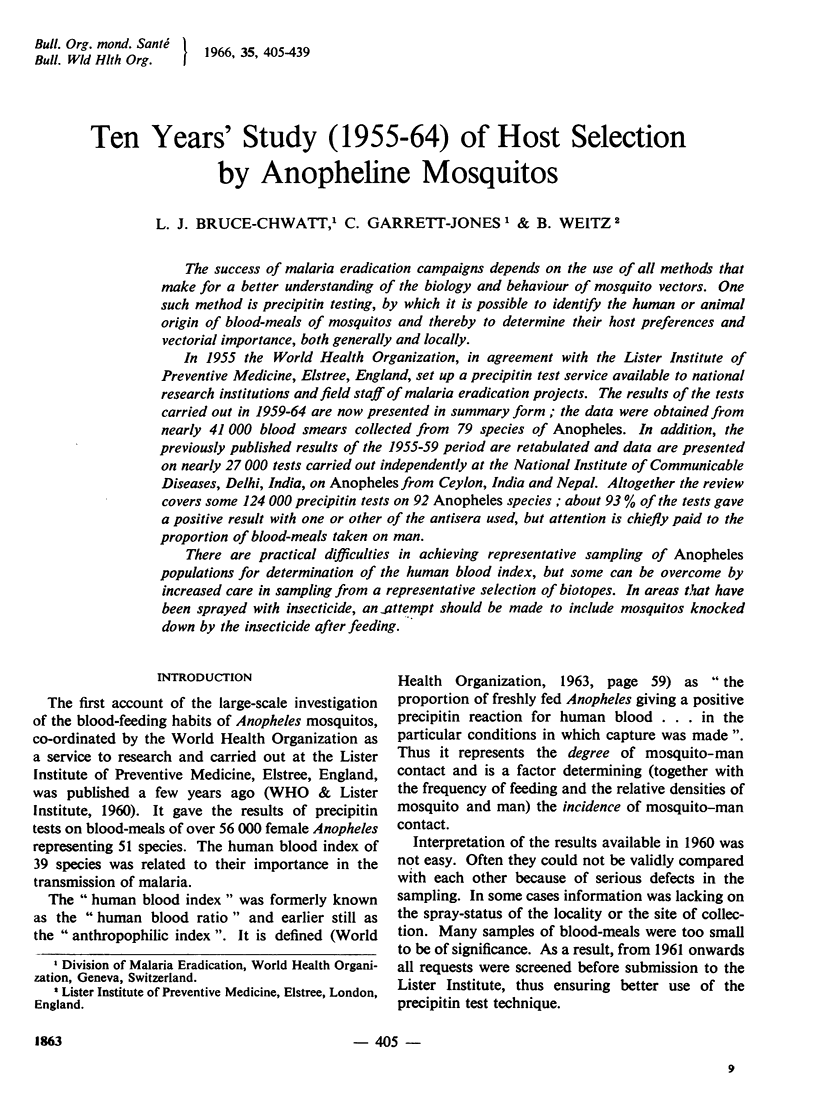
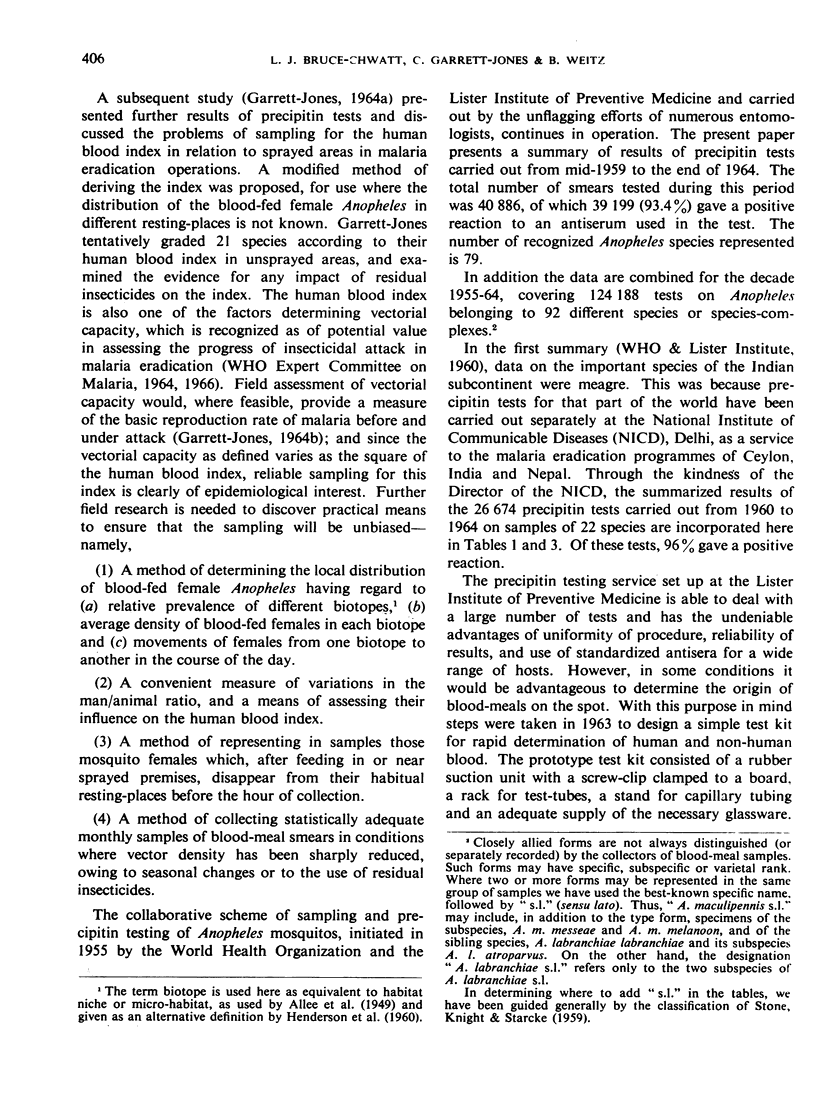
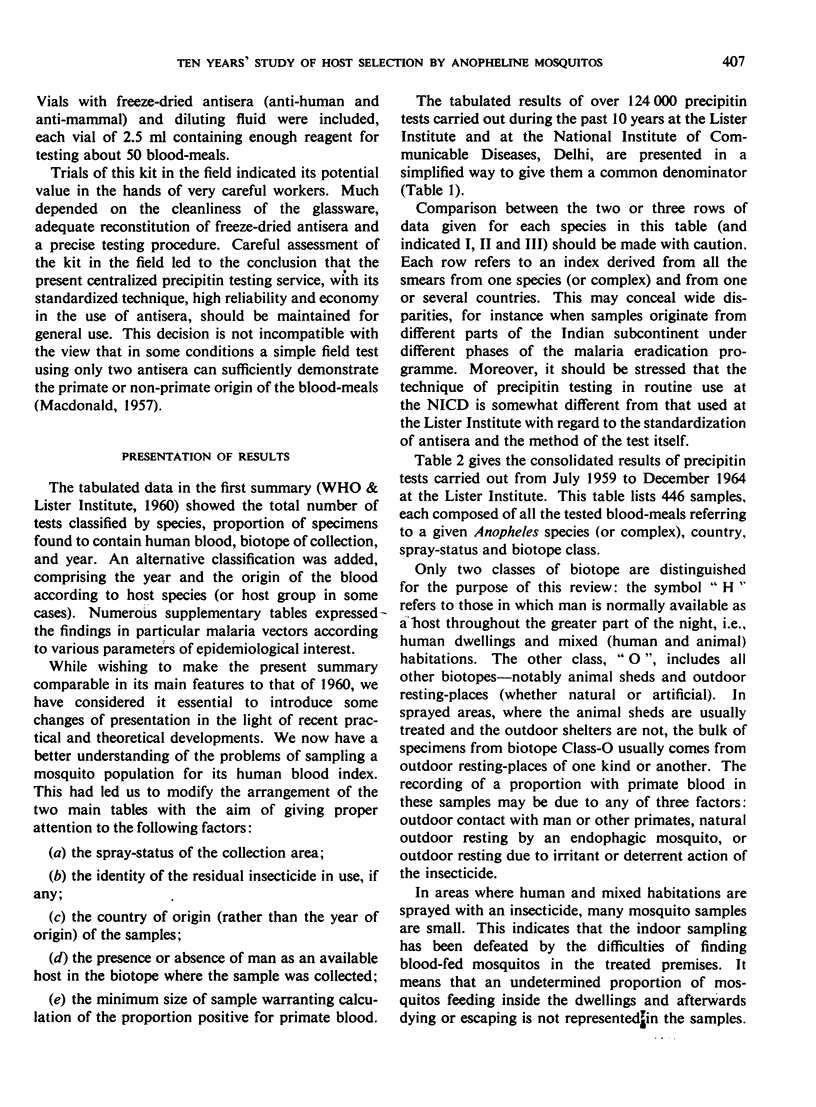
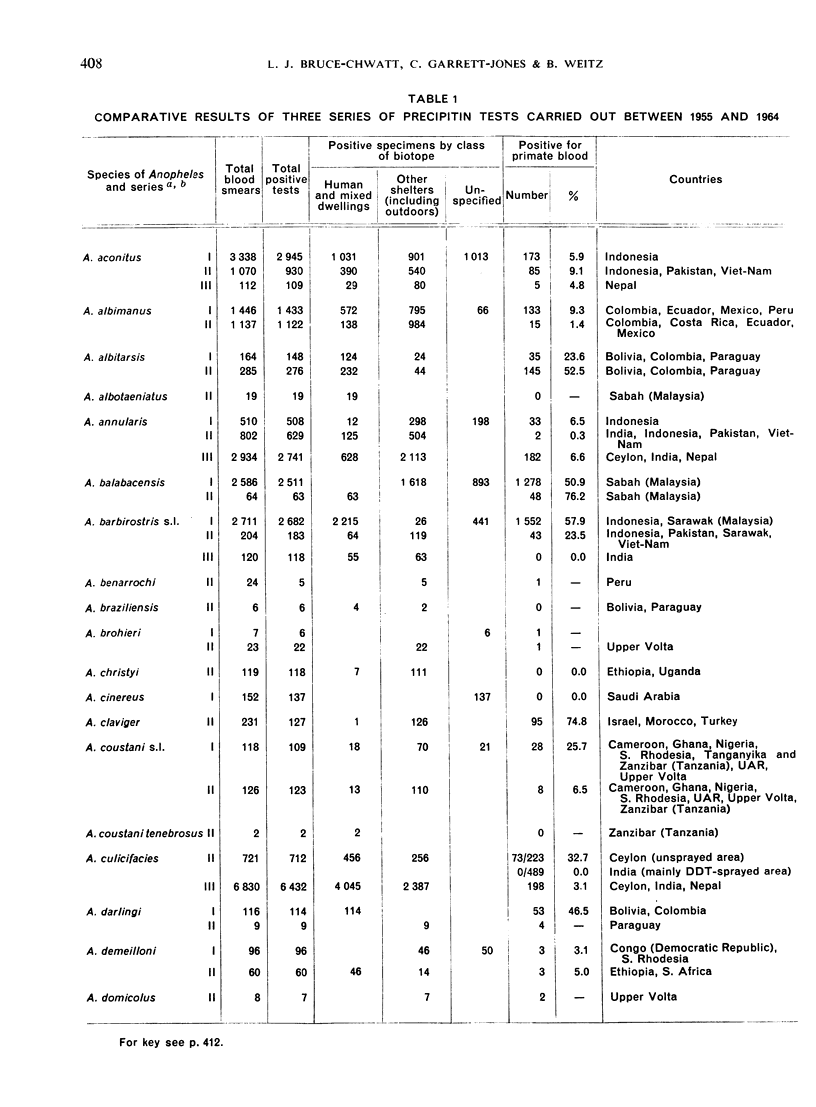
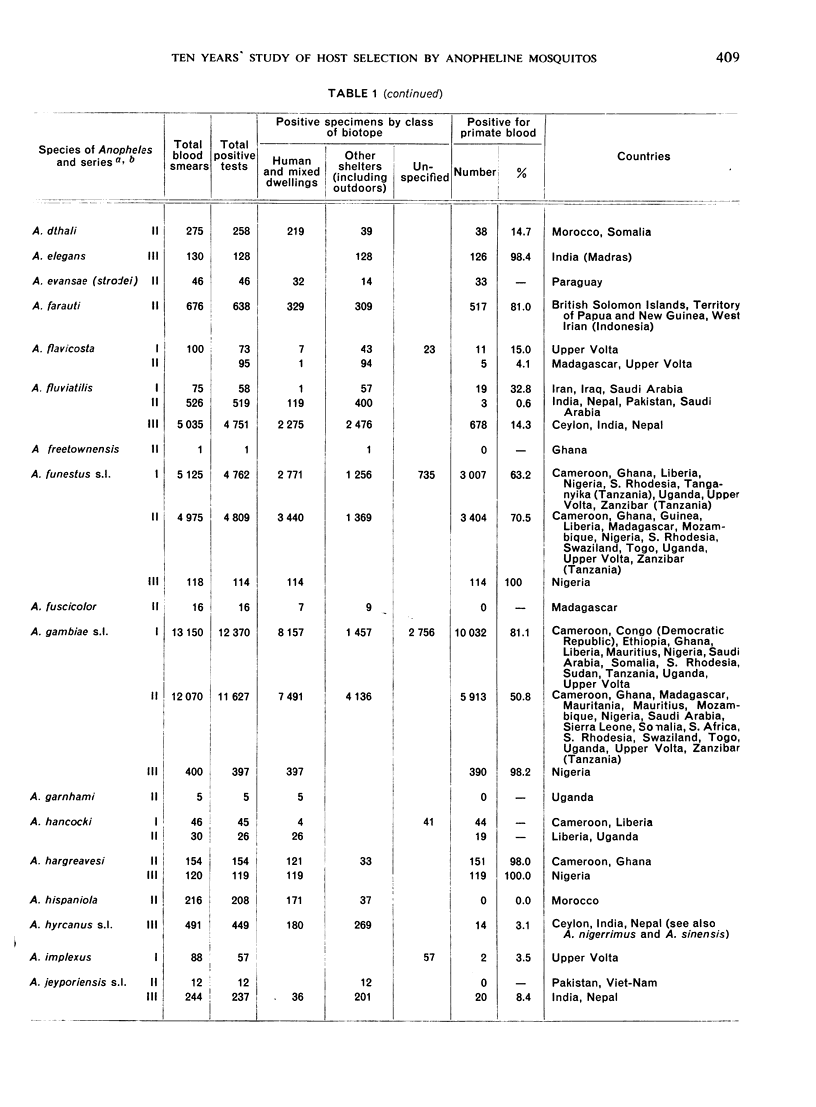
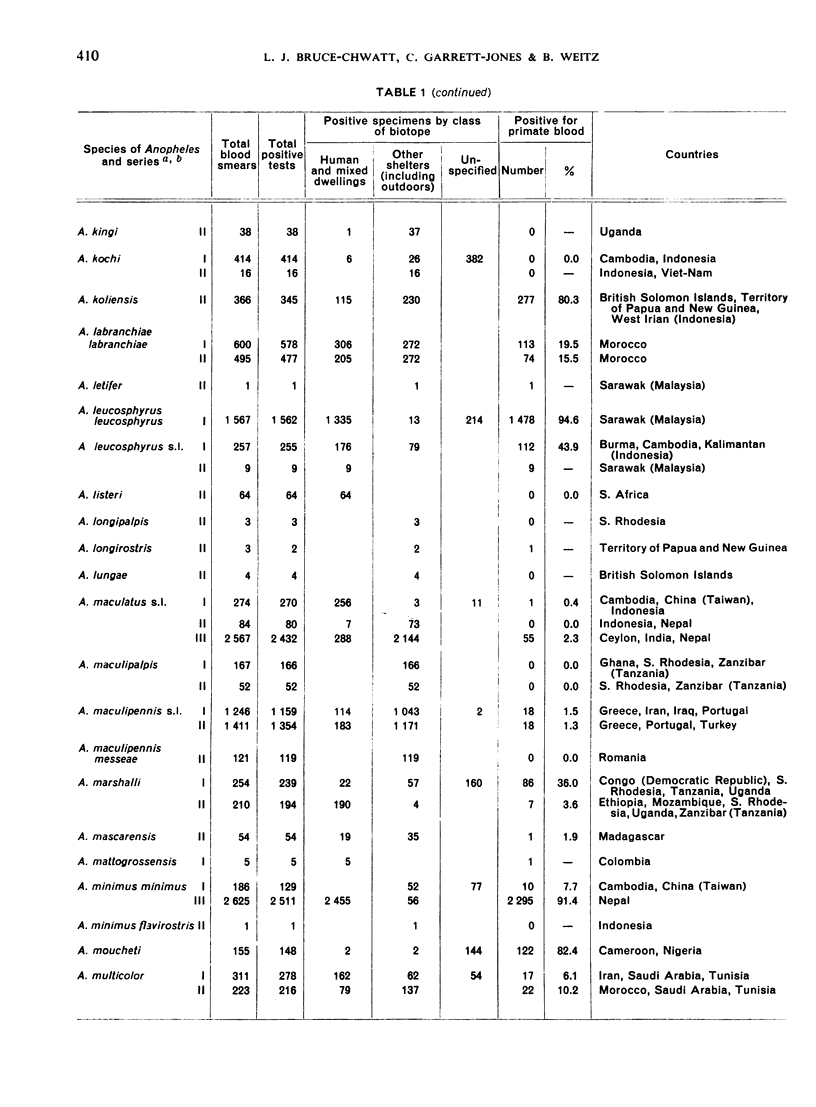
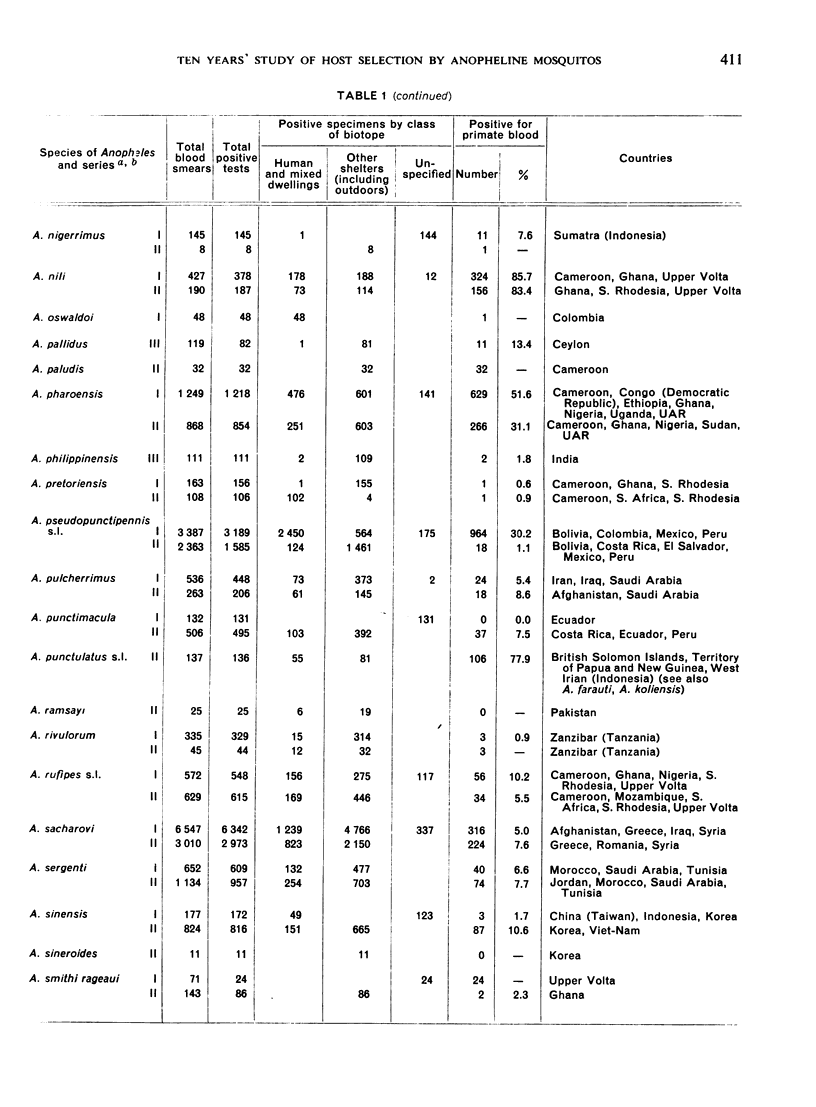
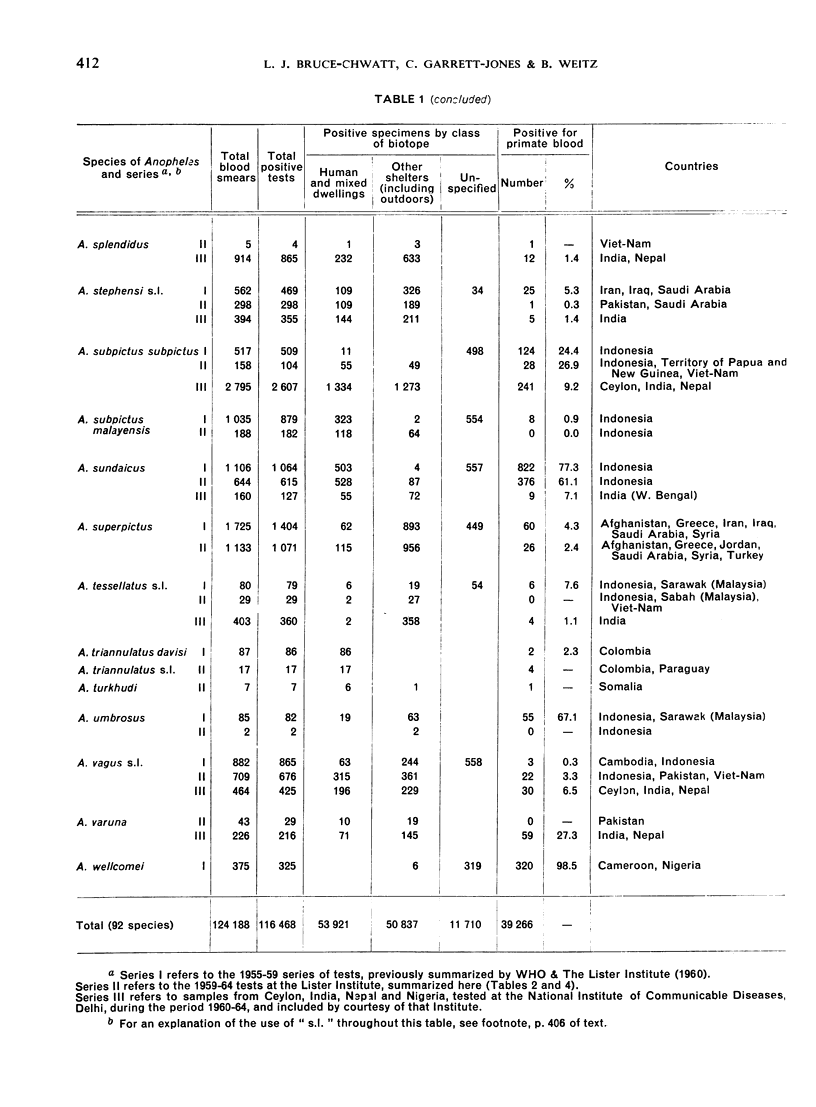

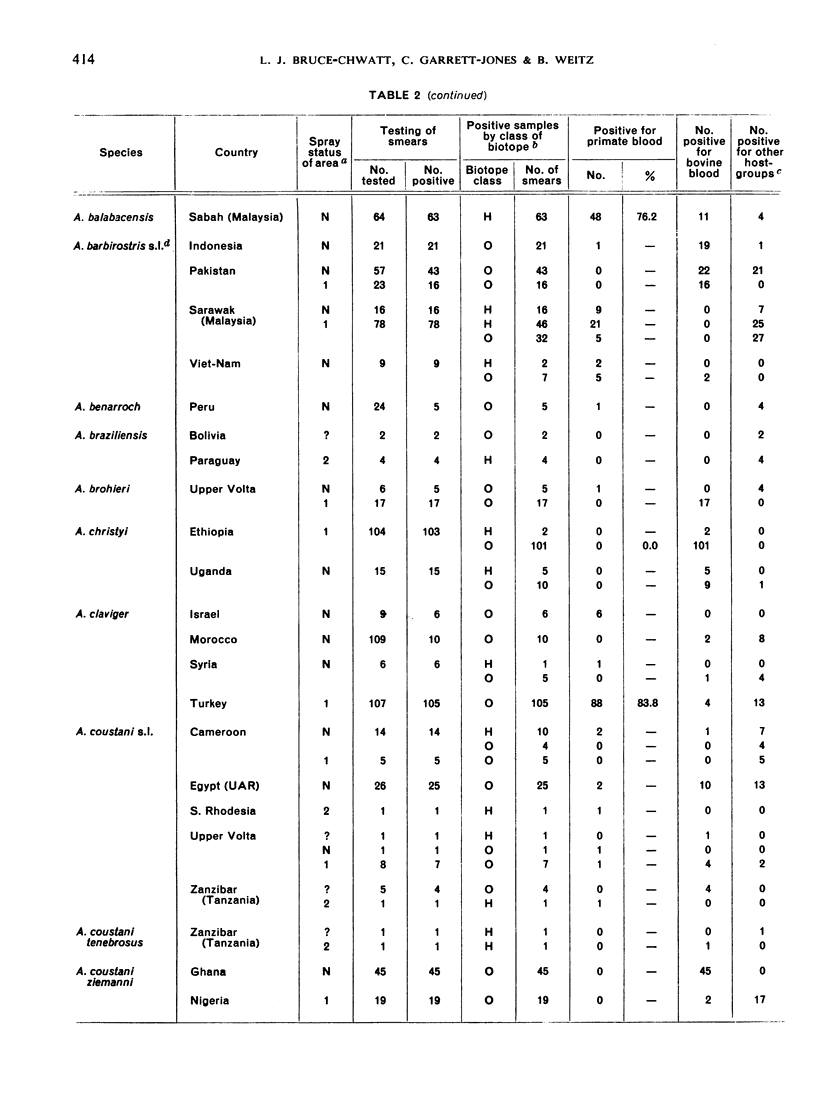
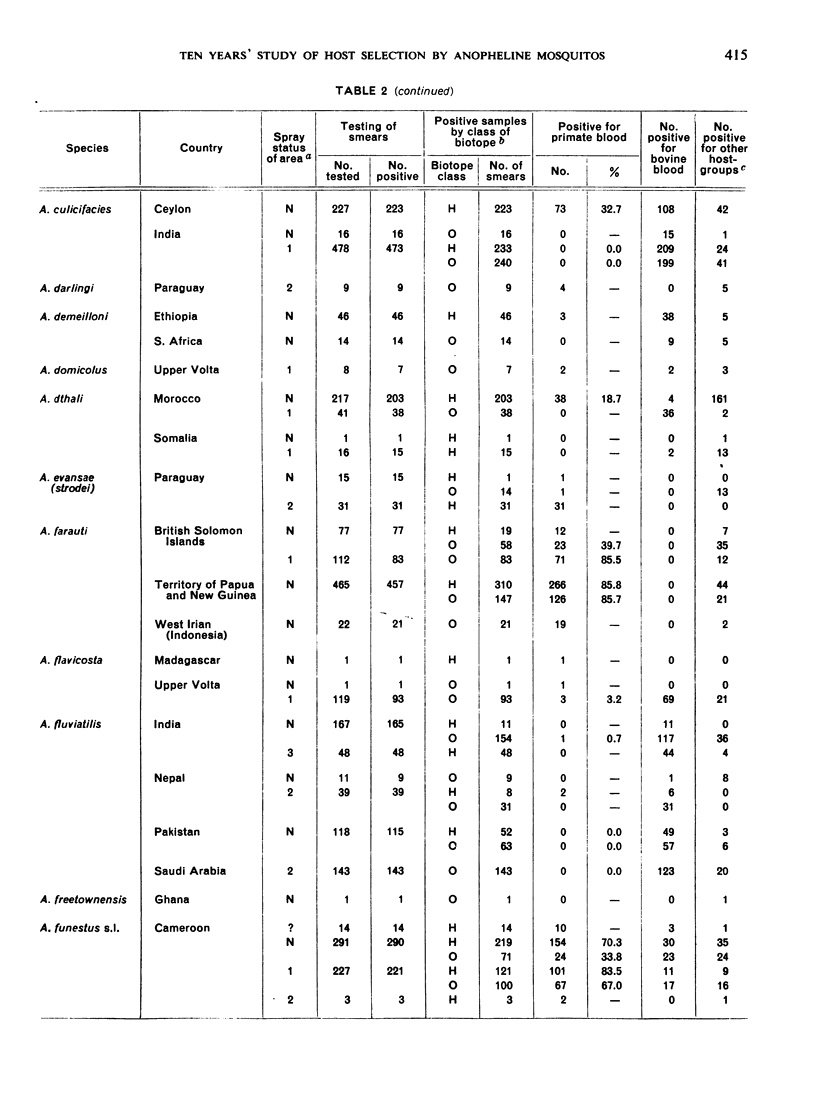
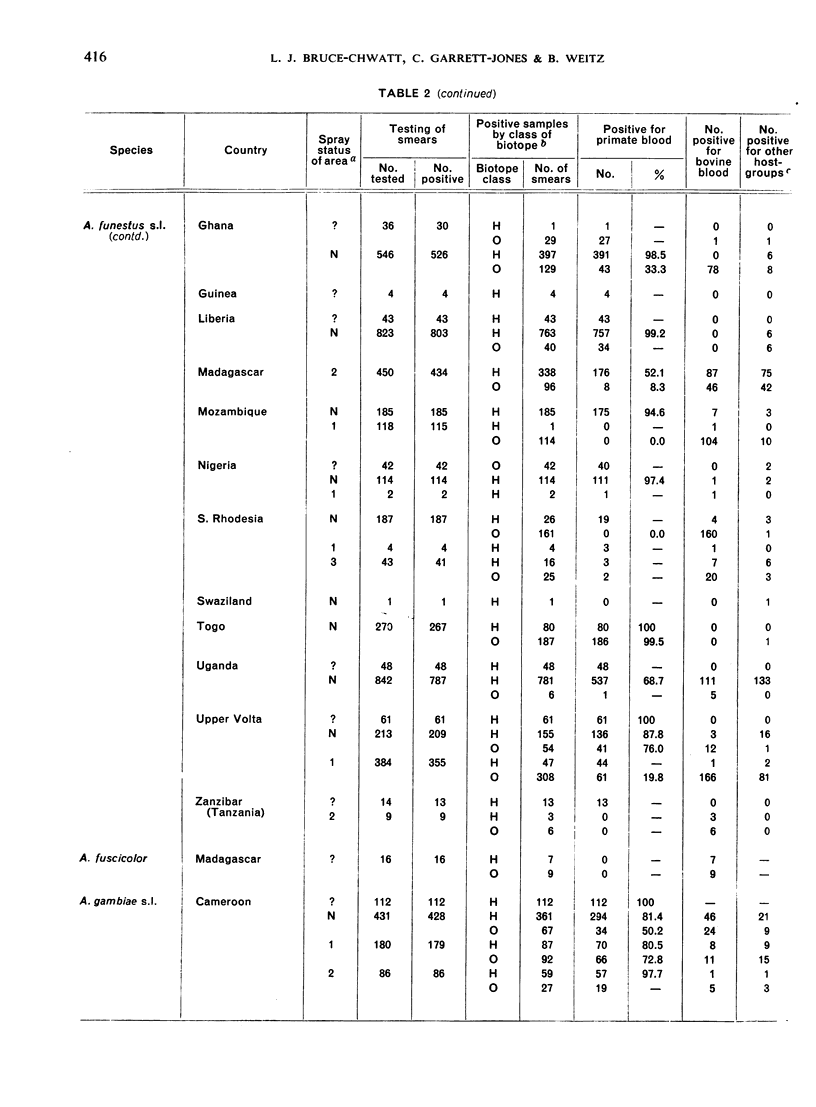
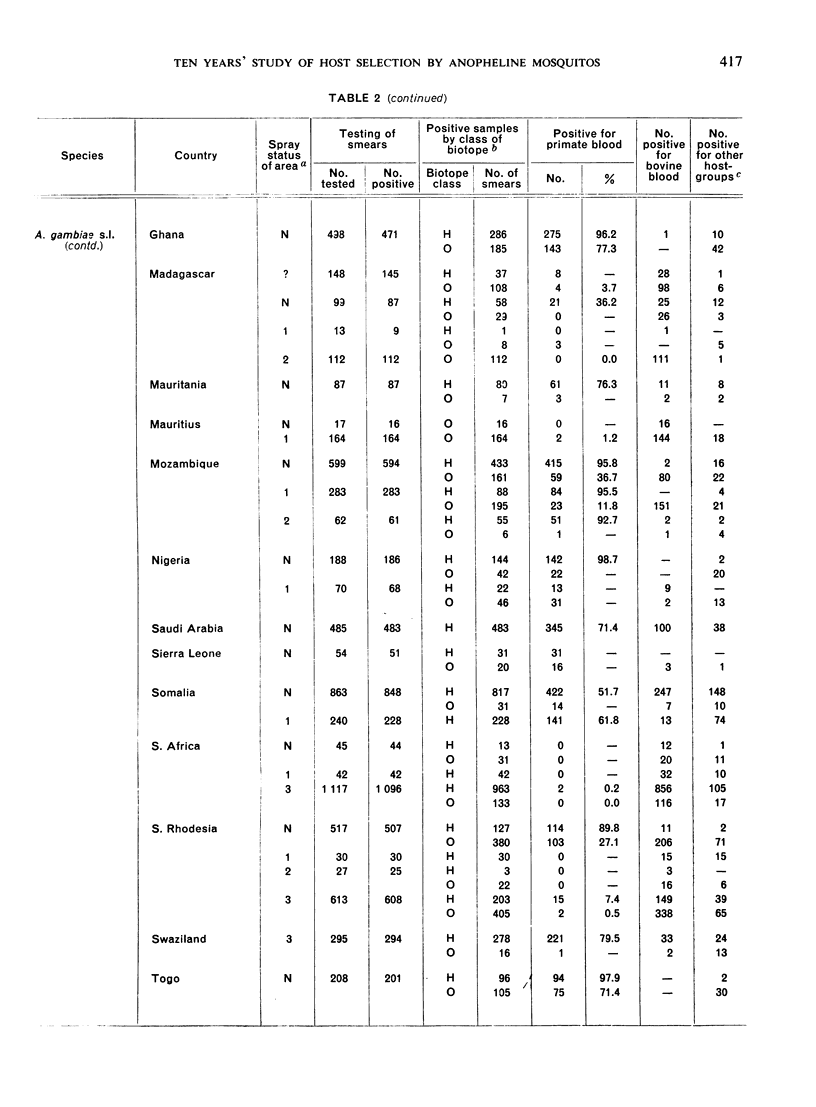
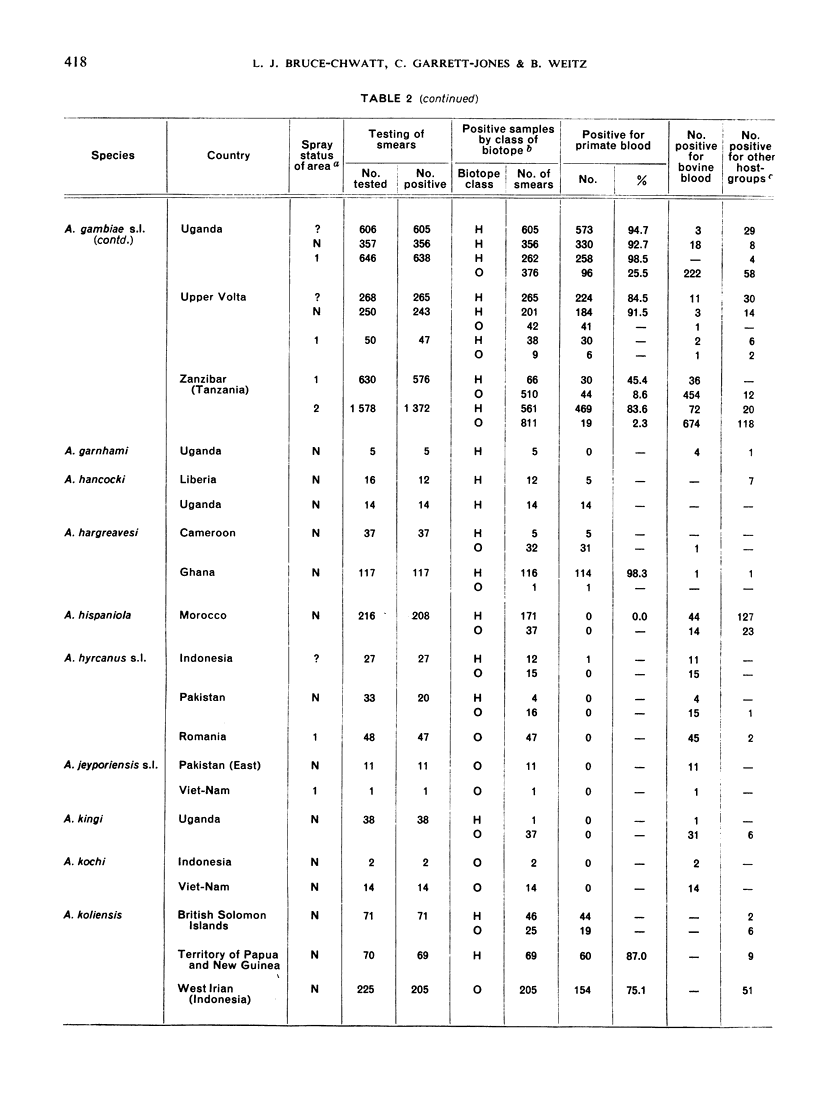
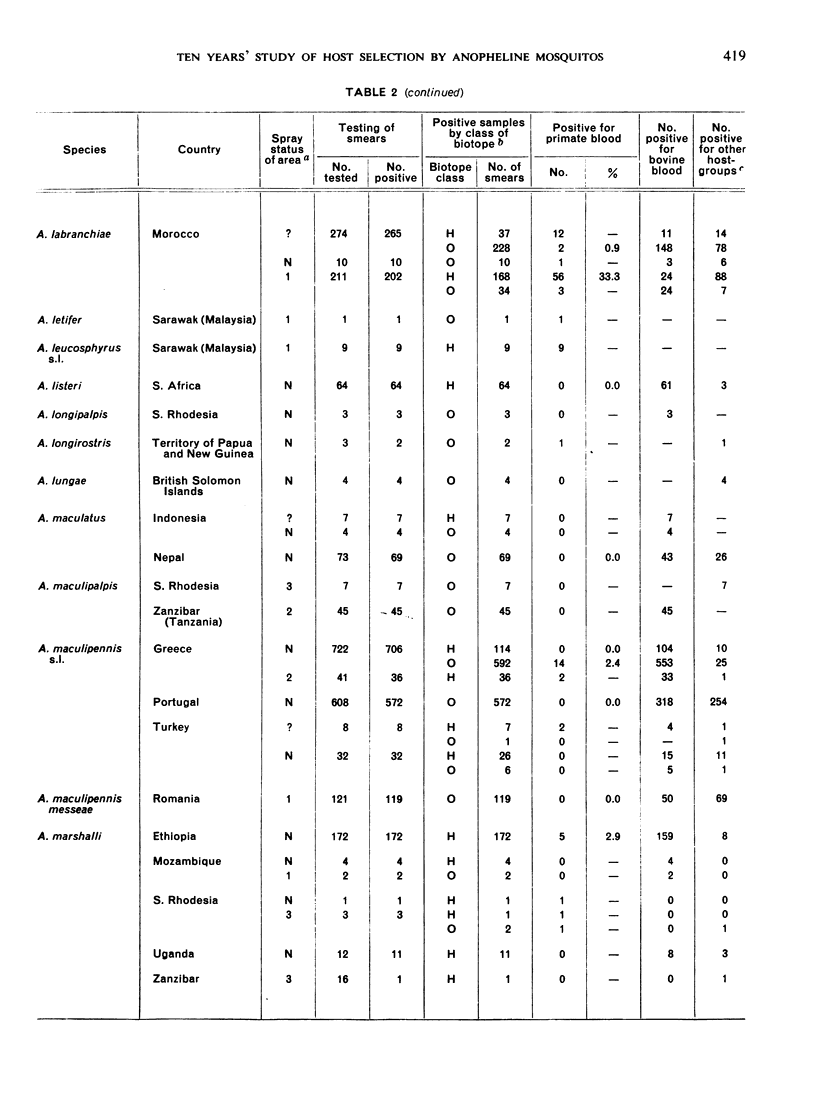
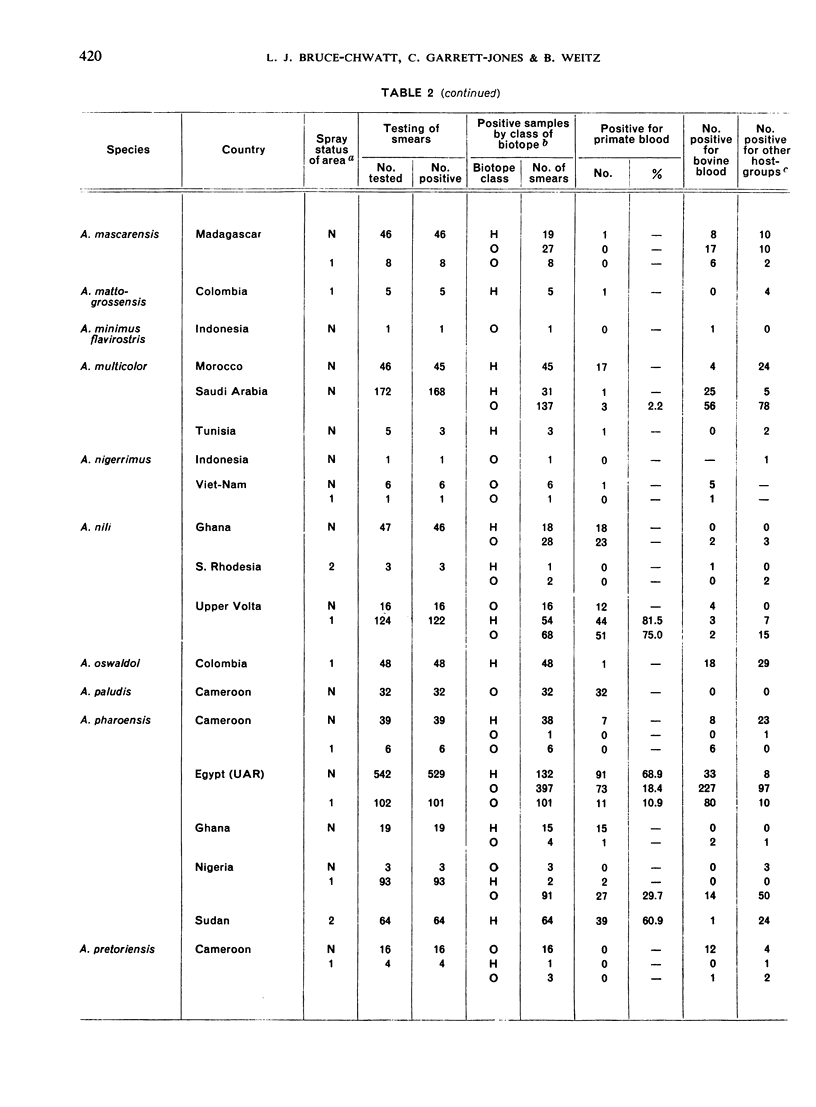
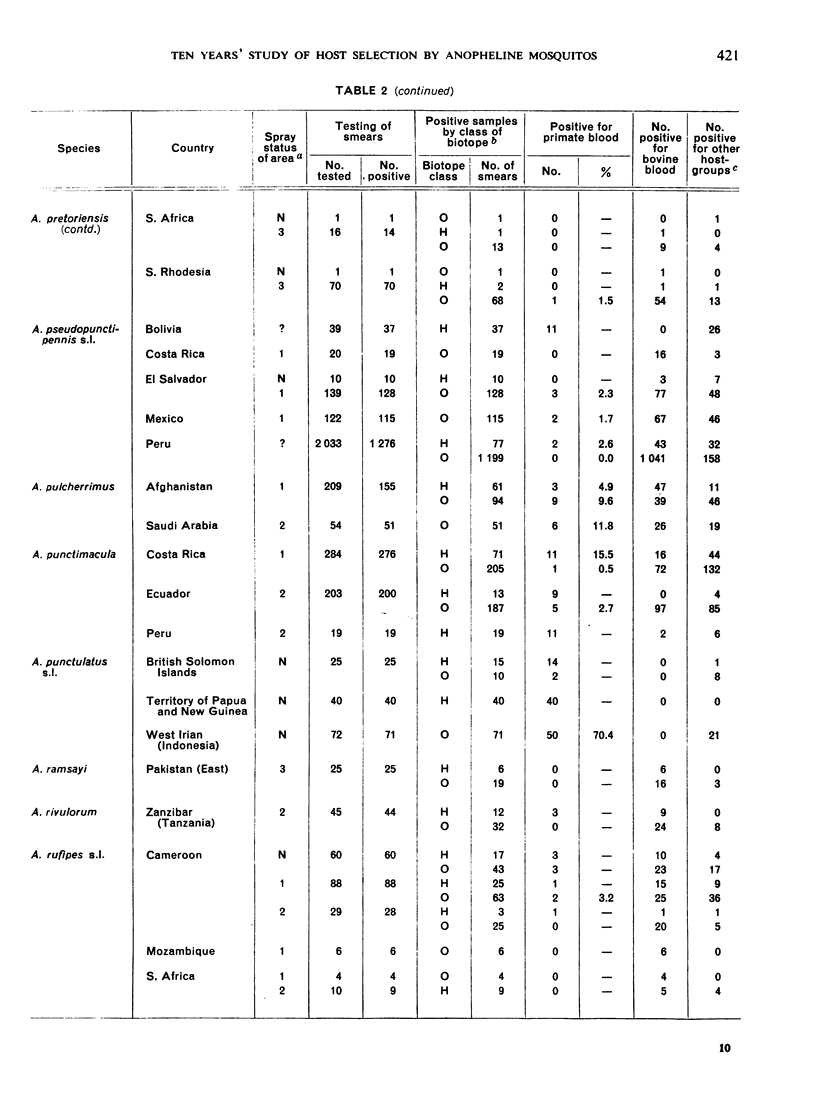
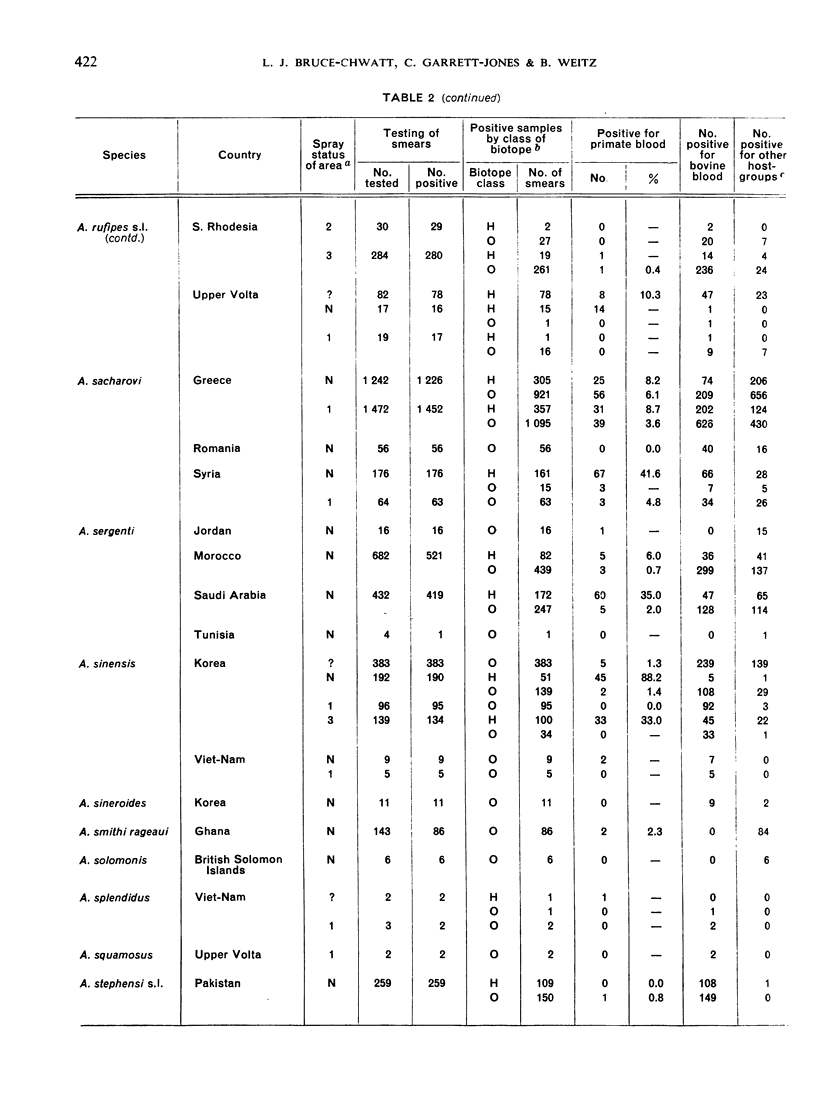
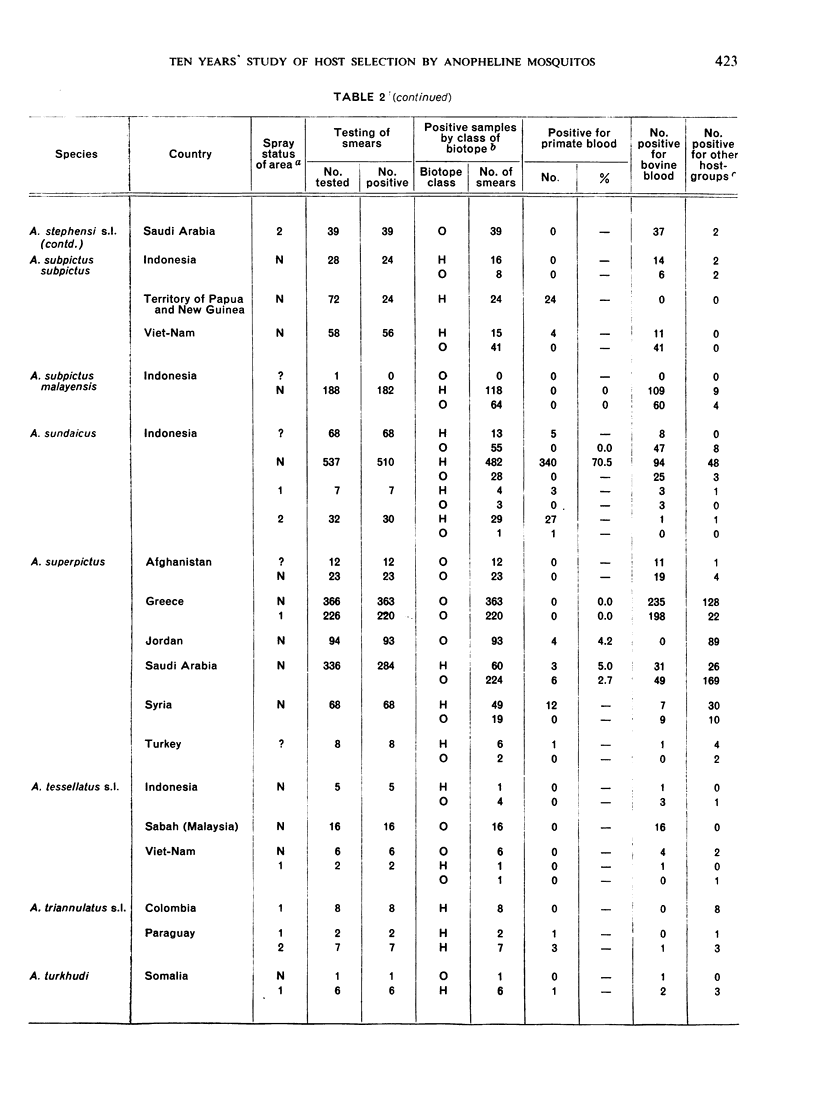
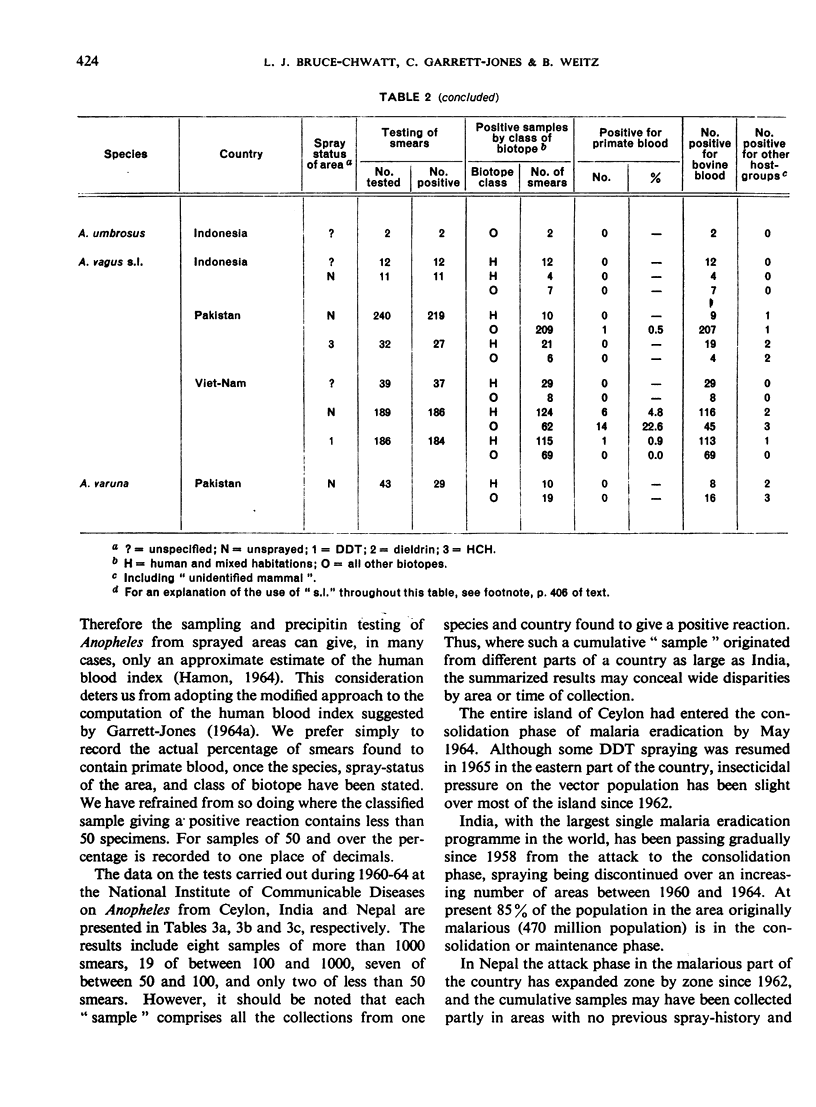
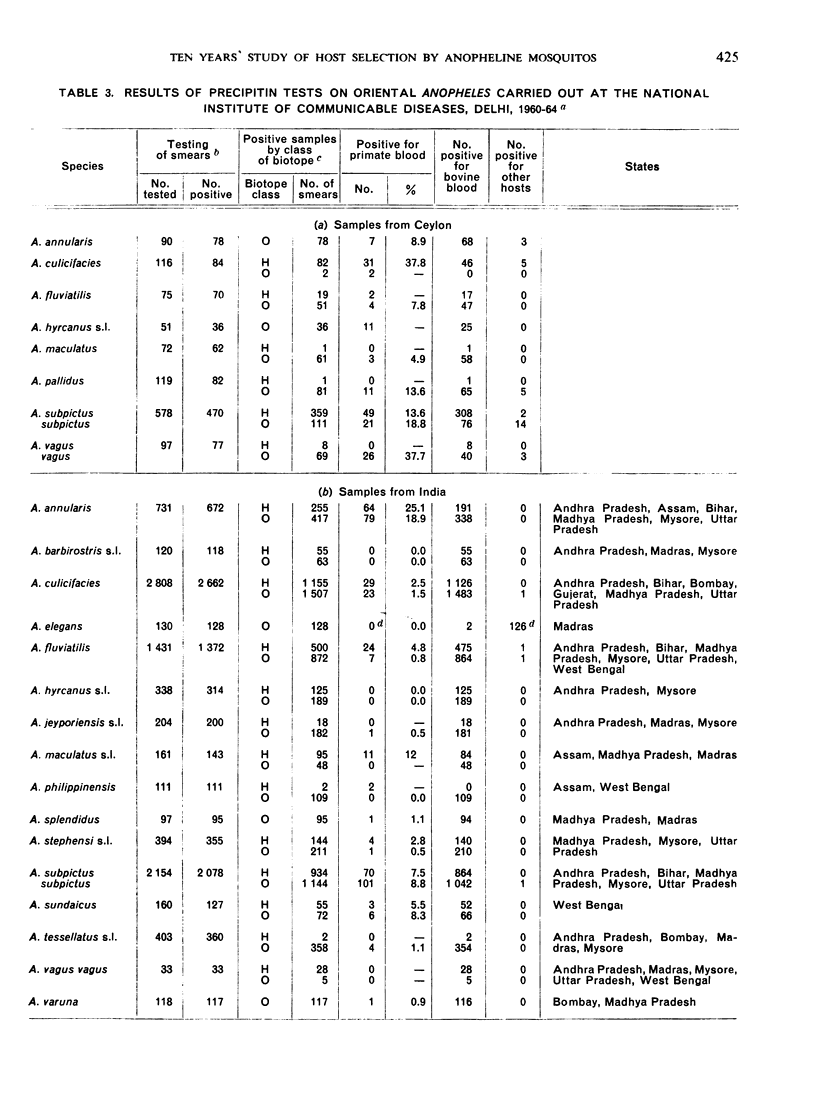
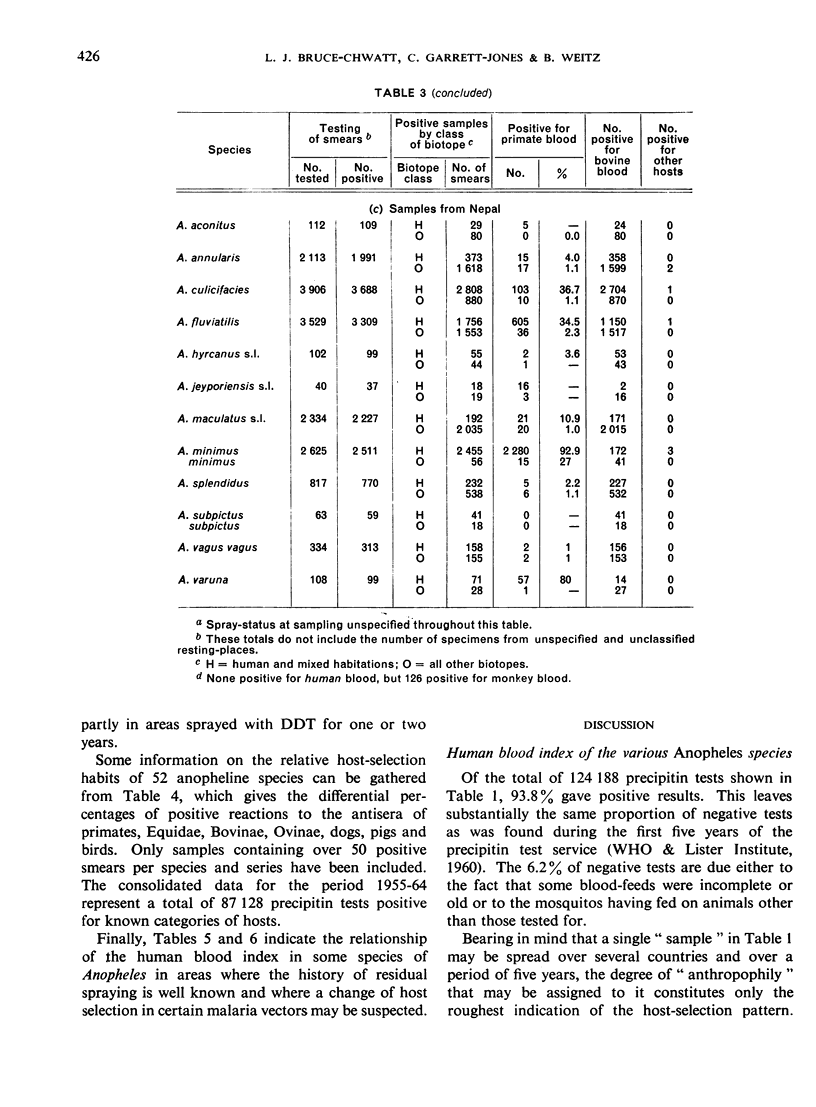
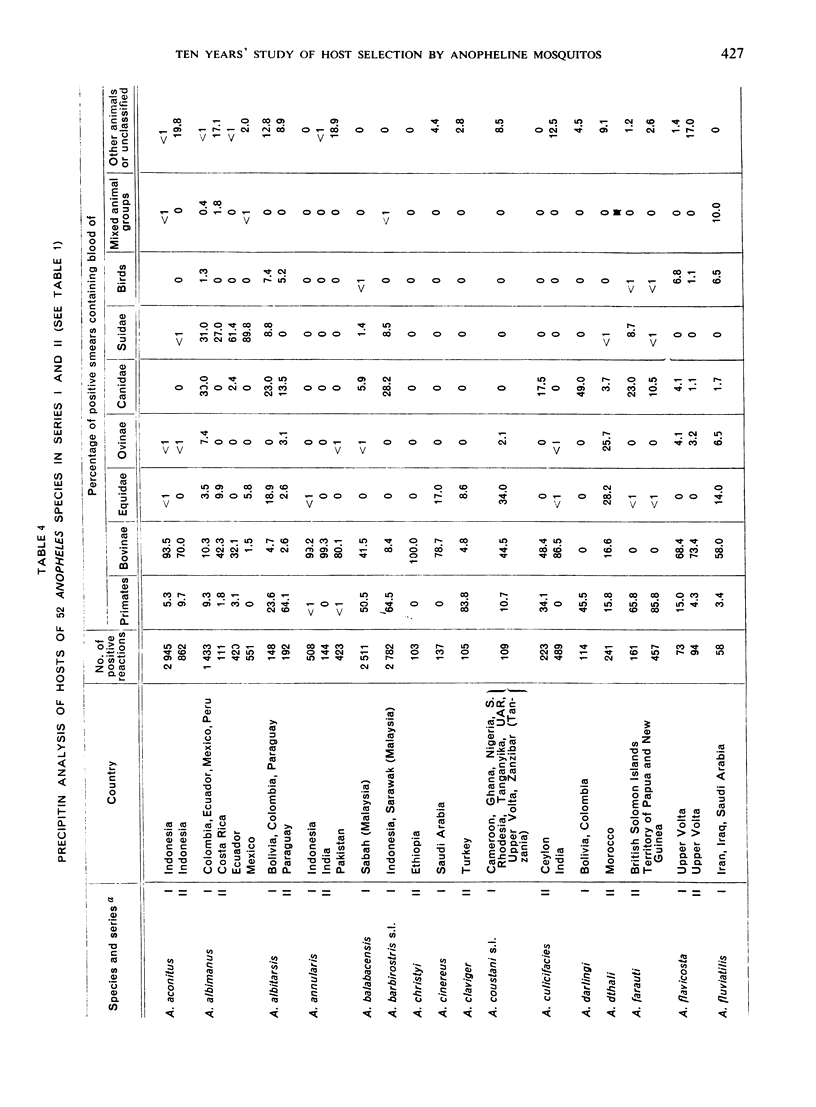
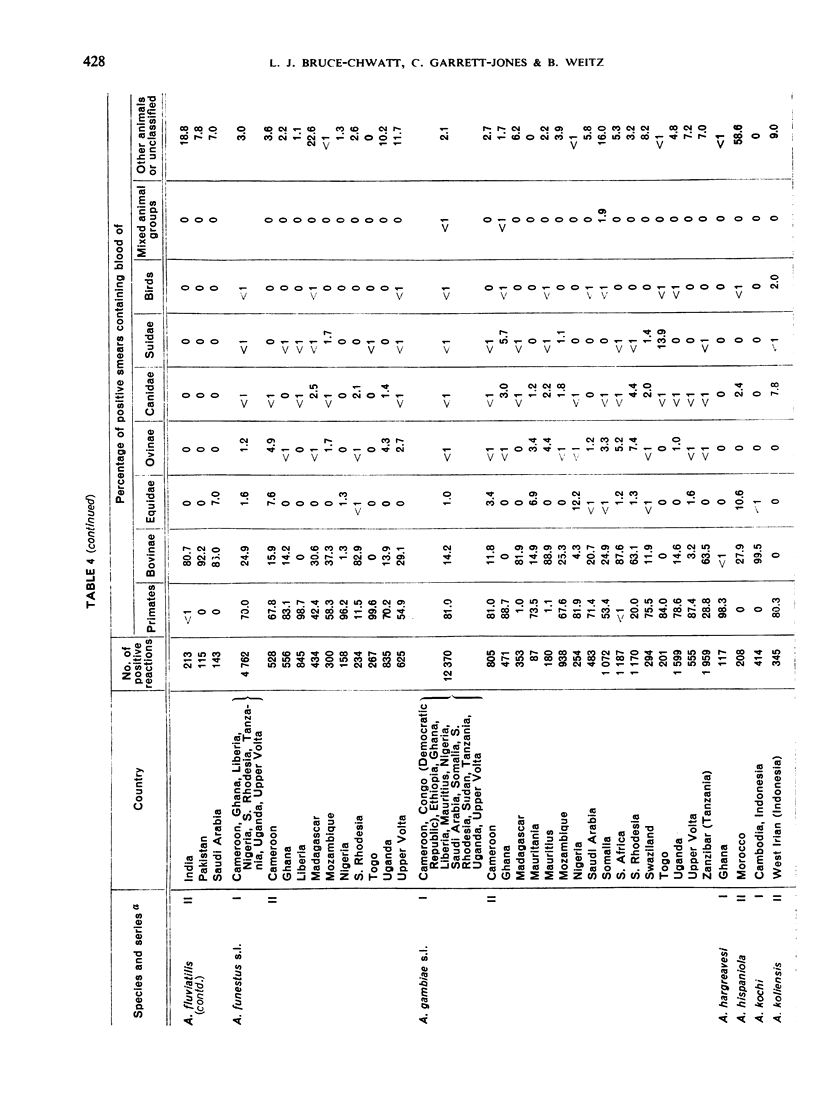
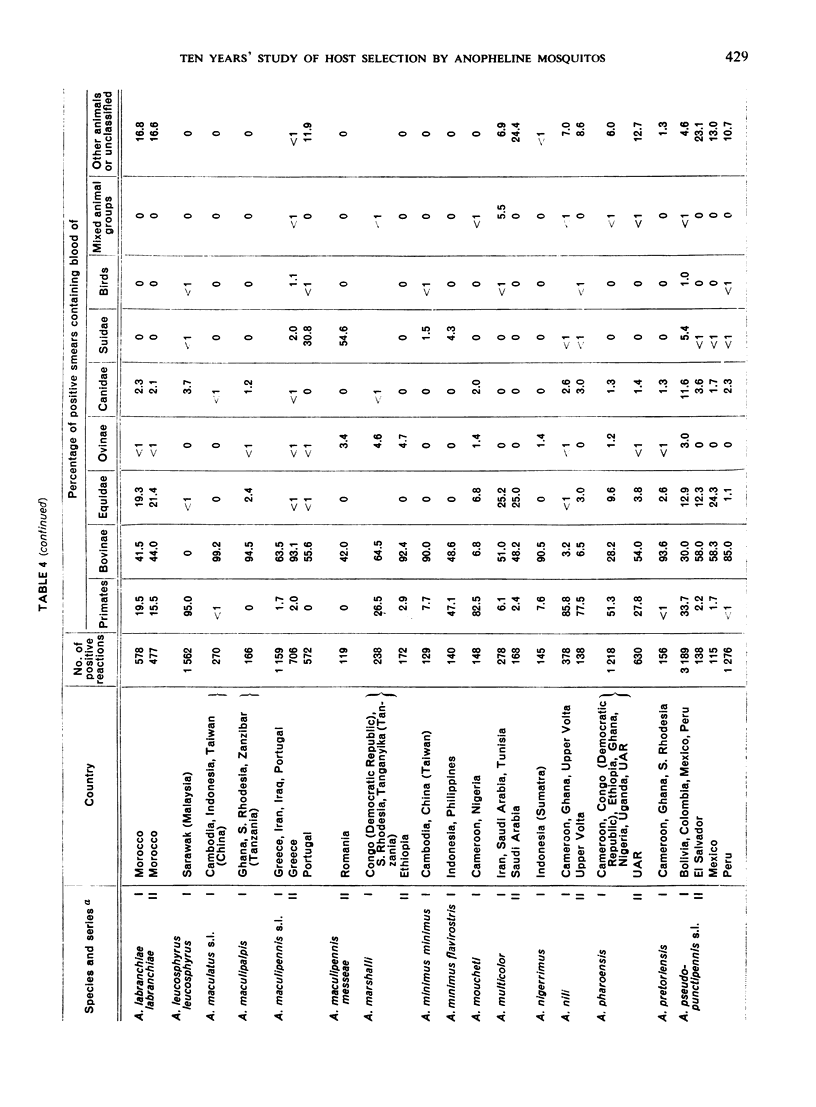
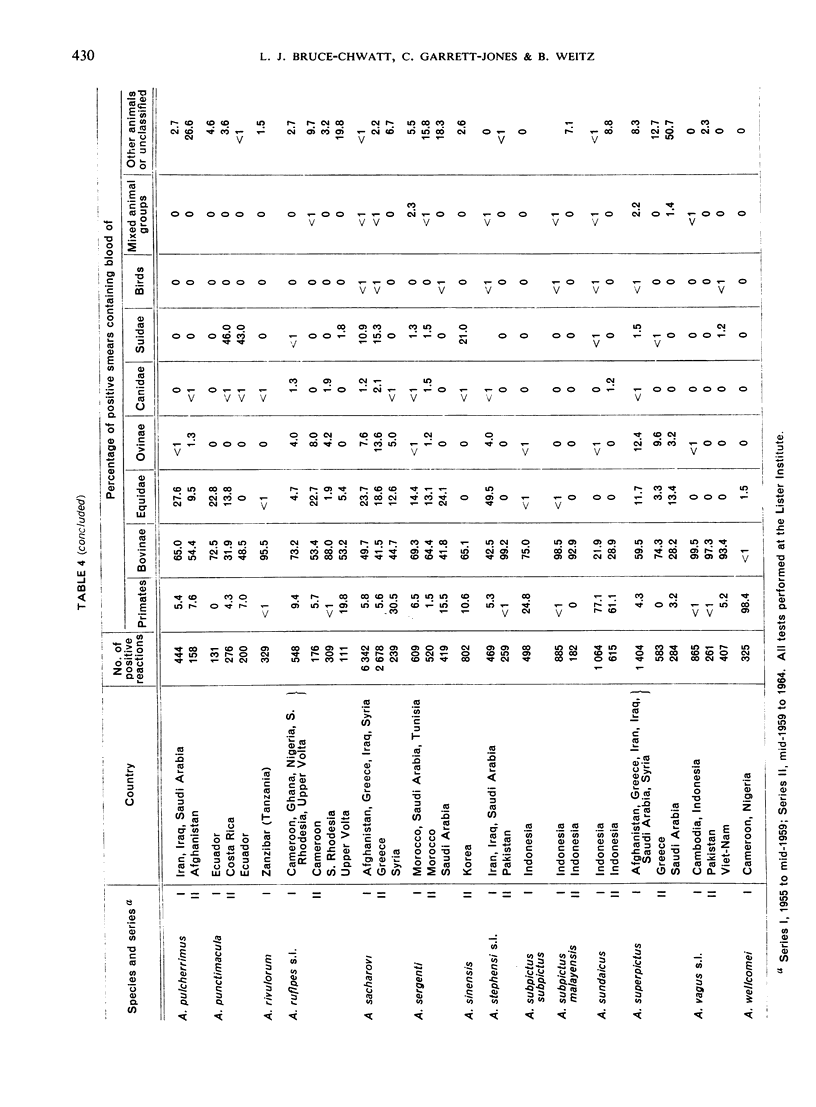
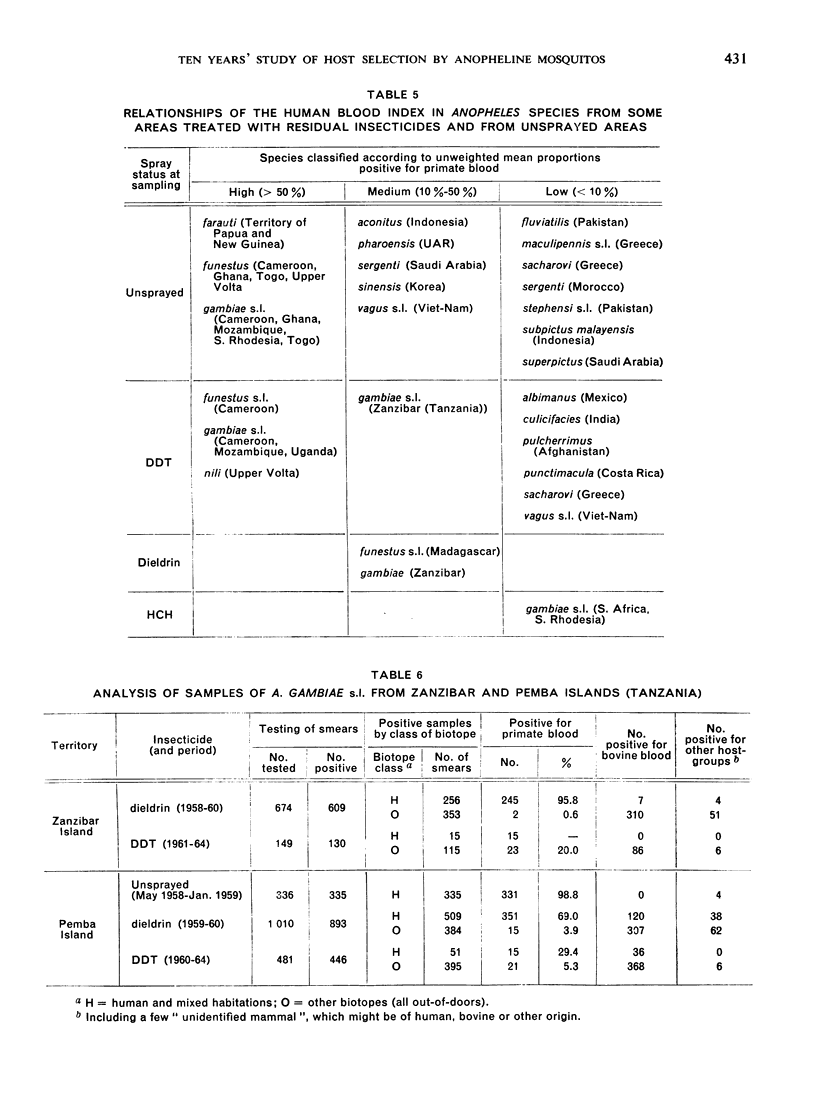
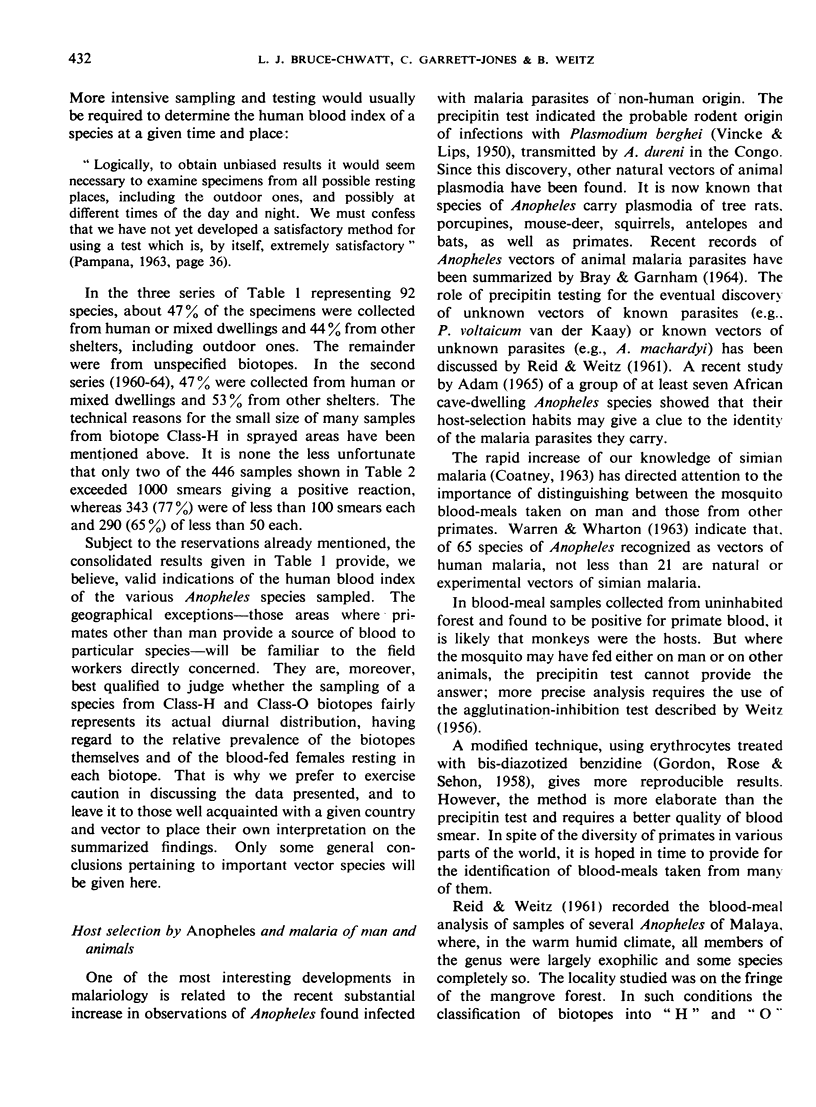
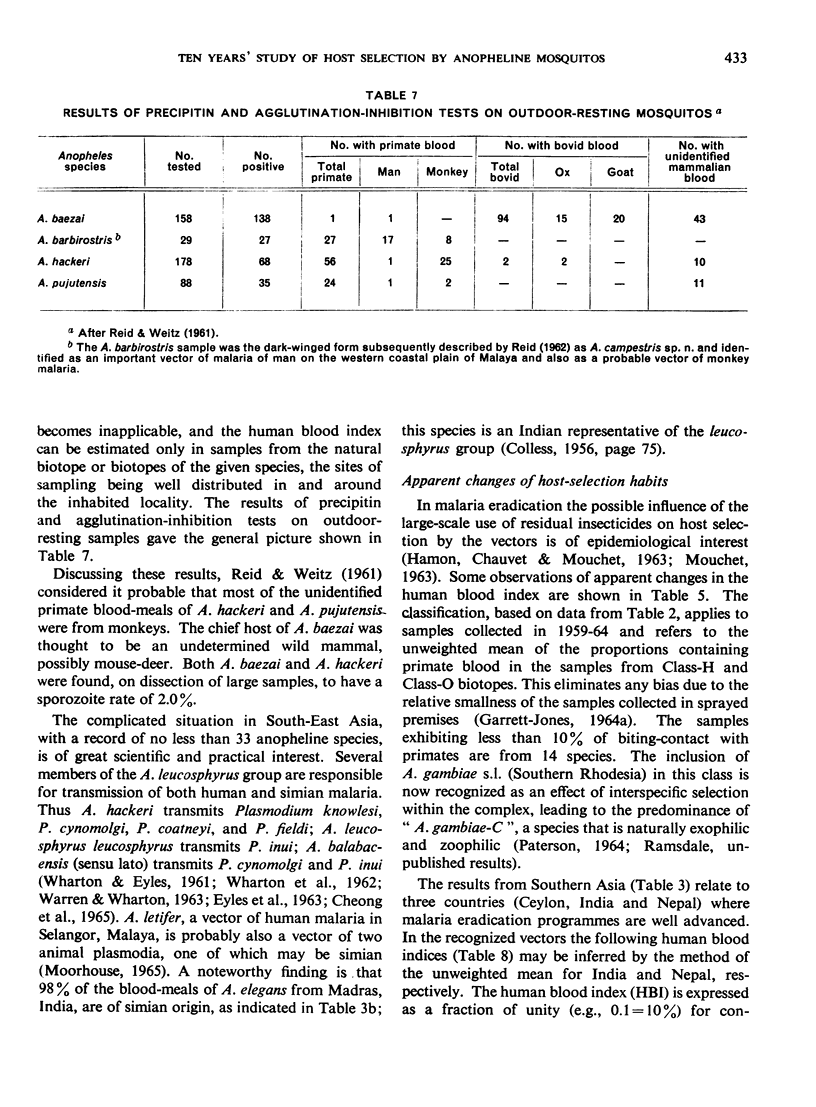
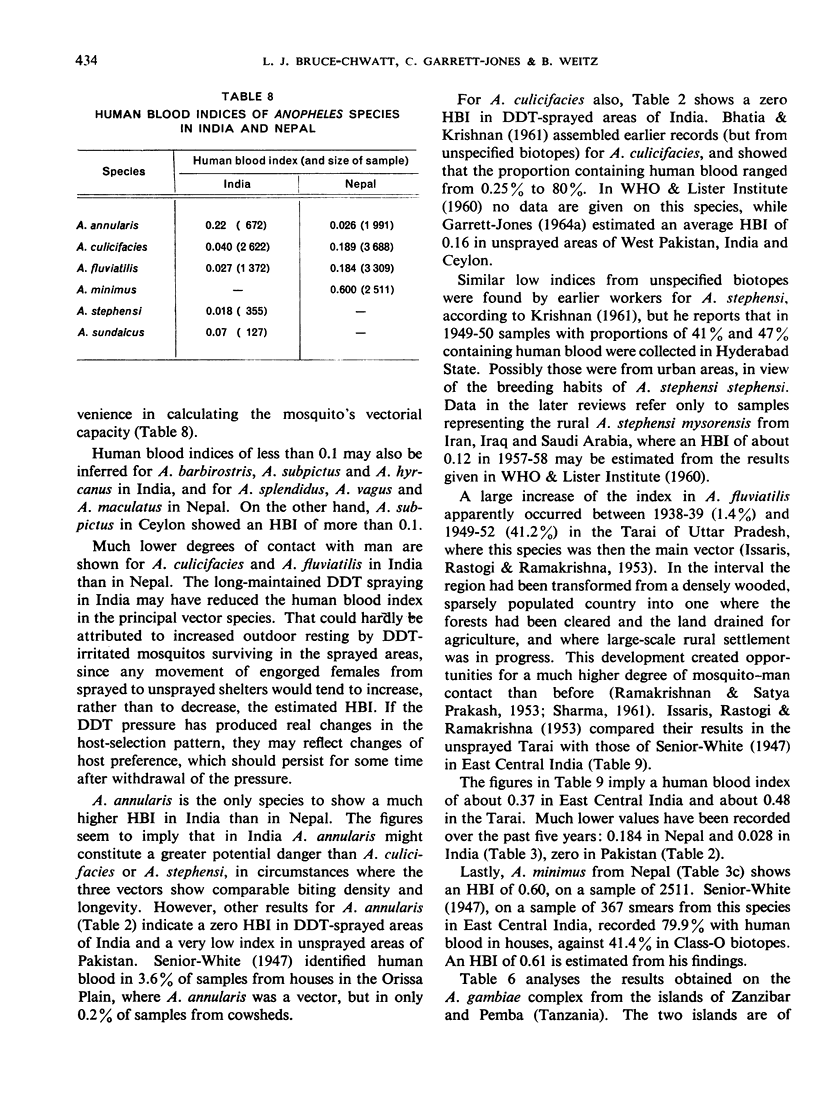
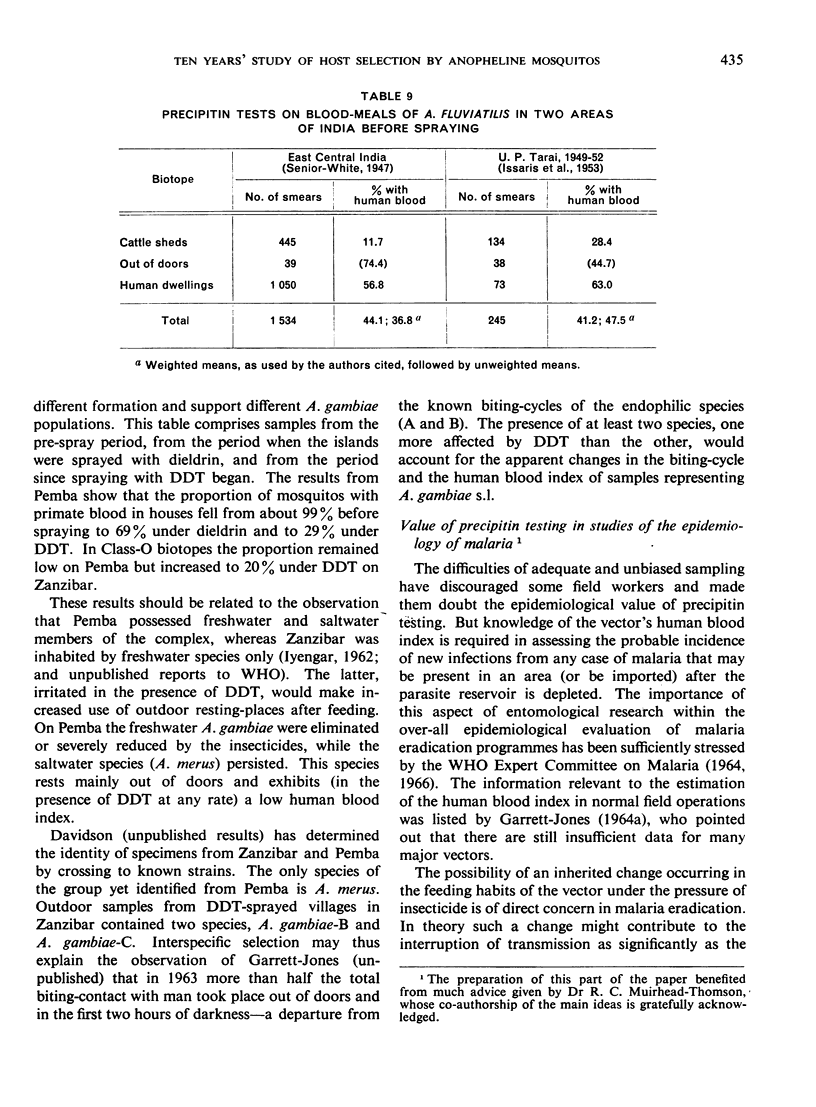
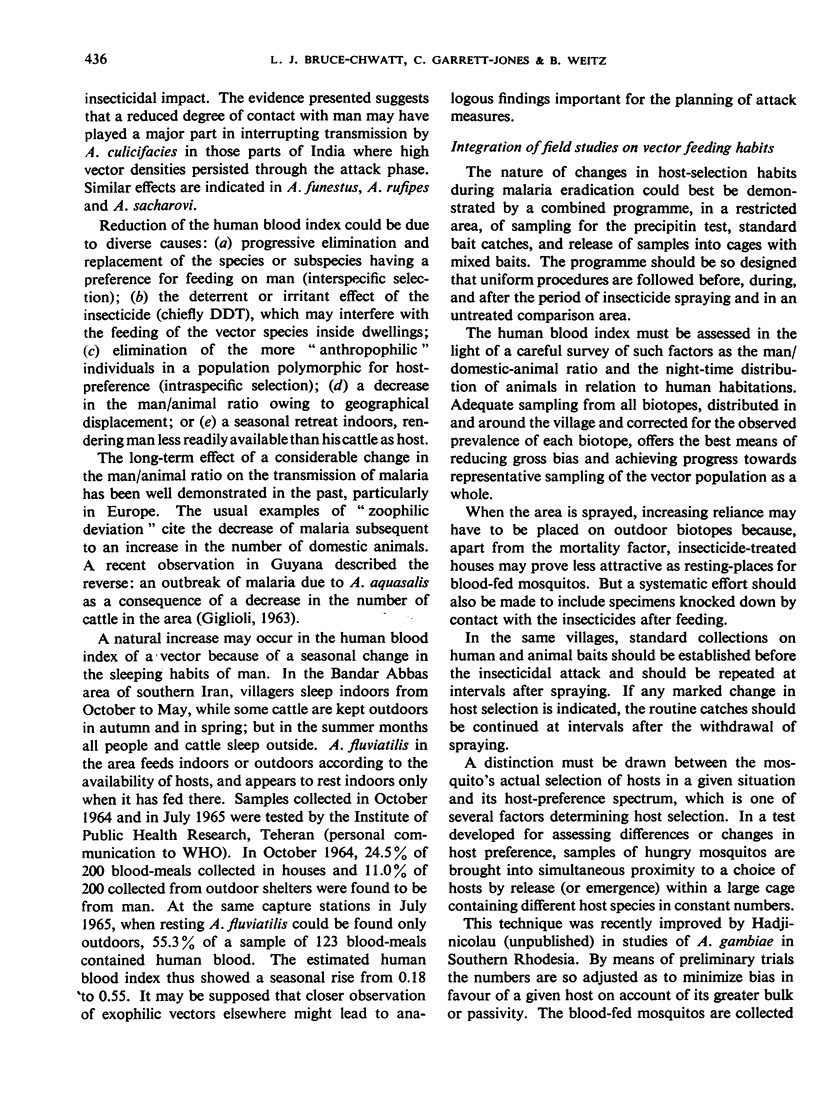
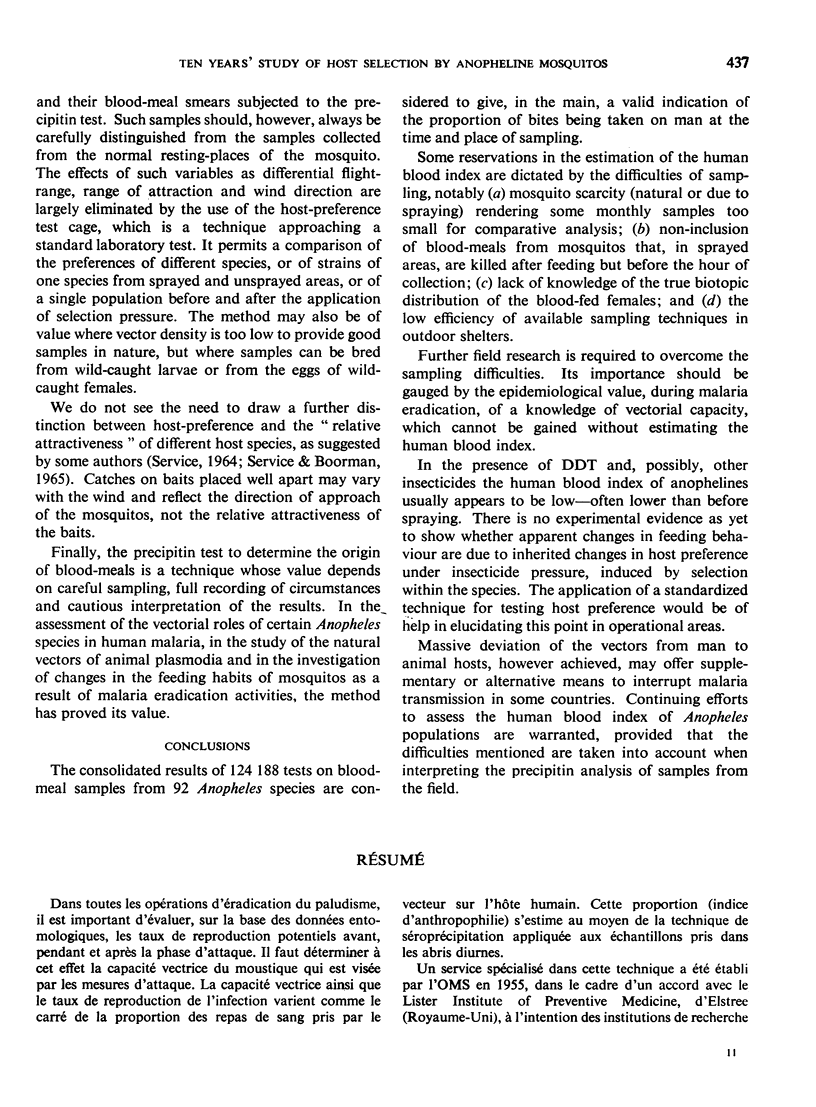
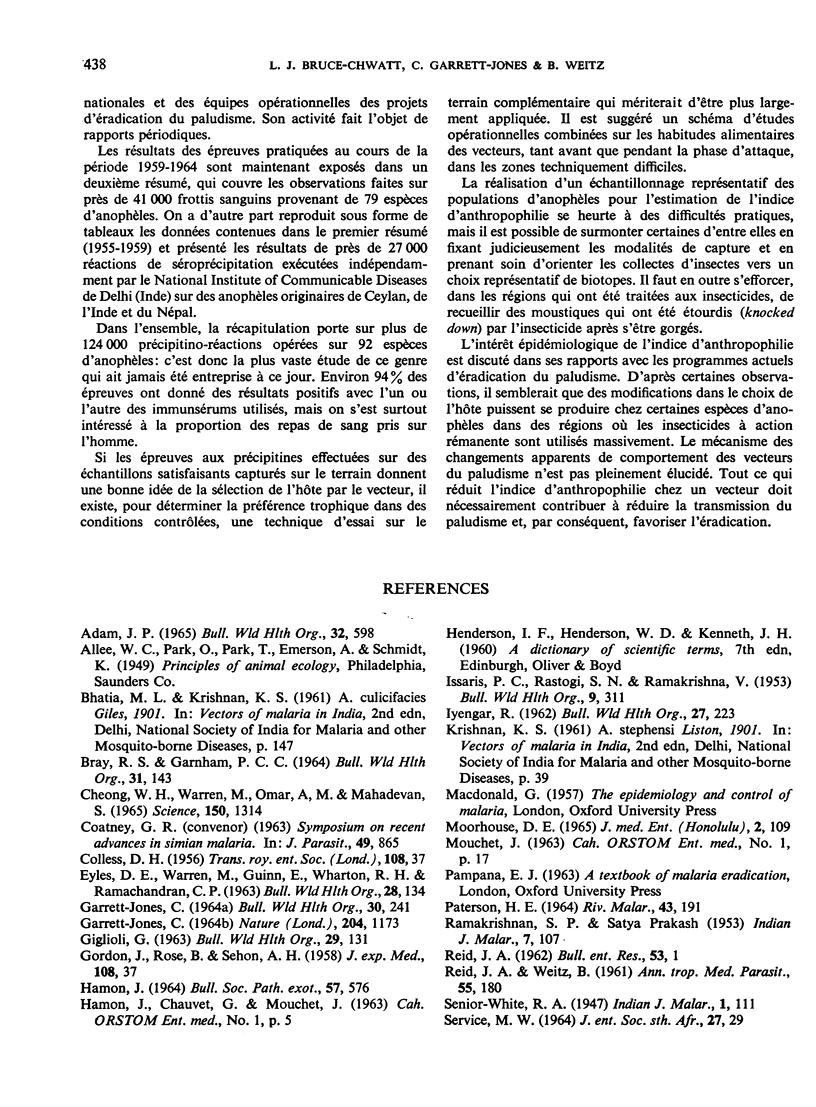
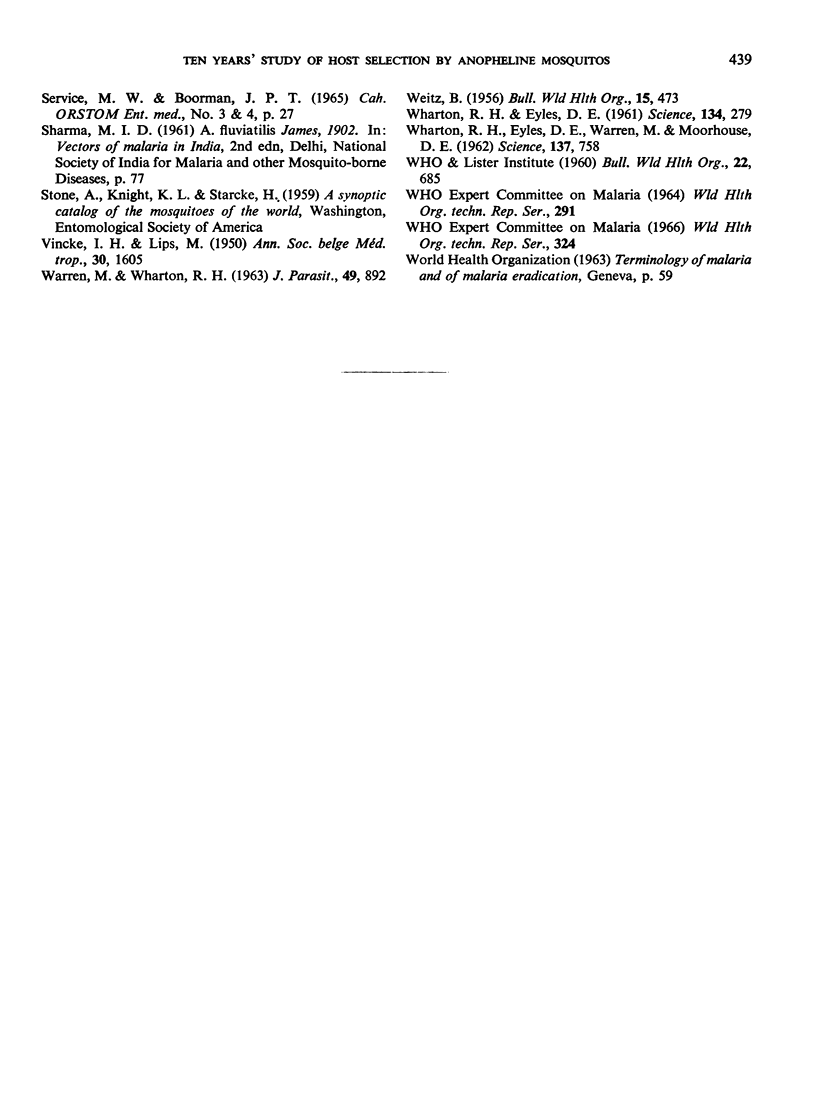
Selected References
These references are in PubMed. This may not be the complete list of references from this article.
- BRAY R. S., GARNHAM P. C. ANOPHELES AS VECTORS OF ANIMAL MALARIA PARASITES. Bull World Health Organ. 1964;31:143–147. [PMC free article] [PubMed] [Google Scholar]
- Cheong W. H., Warren M., Omar A. H., Mahadevan S. Anopheles balabacensis balabacensis identified as vector of simian malaria in Malaysia. Science. 1965 Dec 3;150(3701):1314–1315. doi: 10.1126/science.150.3701.1314. [DOI] [PubMed] [Google Scholar]
- EYLES D. E., WARREN M., GUINN E., WHARTON R. H., RAMACHANDRAN C. P. IDENTIFICATION OF ANOPHELES BALABACENSIS INTROLATUS AS A VECTOR OF MONKEY MALARIA IN MALAYA. Bull World Health Organ. 1963;28(1):134–135. [PMC free article] [PubMed] [Google Scholar]
- GARRETT-JONES C. PROGNOSIS FOR INTERRUPTION OF MALARIA TRANSMISSION THROUGH ASSESSMENT OF THE MOSQUITO'S VECTORIAL CAPACITY. Nature. 1964 Dec 19;204:1173–1175. doi: 10.1038/2041173a0. [DOI] [PubMed] [Google Scholar]
- GARRETT-JONES C. THE HUMAN BLOOD INDEX OF MALARIA VECTORS IN RELATION TO EPIDEMIOLOGICAL ASSESSMENT. Bull World Health Organ. 1964;30:241–261. [PMC free article] [PubMed] [Google Scholar]
- GIGLIOLI G. ECOLOGICAL CHANGE AS A FACTOR IN RENEWED MALARIA TRANSMISSION IN AN ERADICATED AREA. A LOCALIZED OUTBREAK OF A. AQUASALIS-TRANSMITTED MALARIA ON THE DEMERARA RIVER ESTUARY, BRITISH GUIANA, IN THE FIFTEENTH YEAR OF A. DARLINGI AND MALARIA ERADICATION. Bull World Health Organ. 1963;29:131–145. [PMC free article] [PubMed] [Google Scholar]
- GORDON J., ROSE B., SEHON A. H. Detection of non-precipitating antibodies in sera of individuals allergic to ragweed pollen by an in vitro method. J Exp Med. 1958 Jul 1;108(1):37–51. doi: 10.1084/jem.108.1.37. [DOI] [PMC free article] [PubMed] [Google Scholar]
- ISSARIS P. C., RASTOGI S. N., RAMAKRISHNA V. Malaria transmission in the Tarai, Naini Tal District, Uttar Pradesh, India. Bull World Health Organ. 1953;9(3):311–333. [PMC free article] [PubMed] [Google Scholar]
- Moorhouse D. E. Some entomological aspects of the malaria eradication pilot project in Malaya. J Med Entomol. 1965 Jun;2(2):109–119. doi: 10.1093/jmedent/2.2.109. [DOI] [PubMed] [Google Scholar]
- PATERSON H. E. DIRECT EVIDENCE FOR THE SPECIFIC DISTINCTNESS OF FORMS A, B, AND C OF THE ANOPHELES GAMBIAE COMPLEX. Riv Malariol. 1964 Dec;43:191–196. [PubMed] [Google Scholar]
- RAMAKRISHNAN S. P., PRAKASH S. Host predilection of A. fluviatilis in Terai region of Uttar Pradesh India. Indian J Malariol. 1953 Jun;7(2):107–112. [PubMed] [Google Scholar]
- REID J. A., WEITZ B. Anopheline mosquitoes as vectors of animal malaria in Malaya. Ann Trop Med Parasitol. 1961 Jul;55:180–186. doi: 10.1080/00034983.1961.11686034. [DOI] [PubMed] [Google Scholar]
- VINCKE I. H., LIPS M. Note sur la transmission cyclique du Plasmodium berghei. Ann Soc Belg Med Trop (1920) 1950 Dec 31;30(6):1605–1611. [PubMed] [Google Scholar]
- WARREN M., WHARTON R. H. THE VECTORS OF SIMIAN MALARIA: IDENTITY, BIOLOGY, AND GEOGRAPHICAL DISTRIBUTION. J Parasitol. 1963 Dec;49:892–904. [PubMed] [Google Scholar]
- WEITZ B. Identification of blood meals of blood-sucking arthropods. Bull World Health Organ. 1956;15(3-5):473–490. [PMC free article] [PubMed] [Google Scholar]
- WHARTON R. H., EYLES D. E. Anopheles hackeri, a vector of Plasmodium knowlesi in Malaya. Science. 1961 Jul 28;134(3474):279–280. doi: 10.1126/science.134.3474.279. [DOI] [PubMed] [Google Scholar]
- WHARTON R. H., EYLES D. E., WARREN M., MOORHOUSE D. E. Anopheles leucosphyrus identified as a vector of monkey malaria in Malaya. Science. 1962 Sep 7;137(3532):758–758. doi: 10.1126/science.137.3532.758. [DOI] [PubMed] [Google Scholar]


